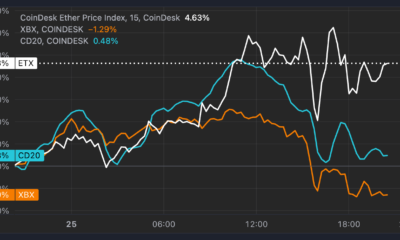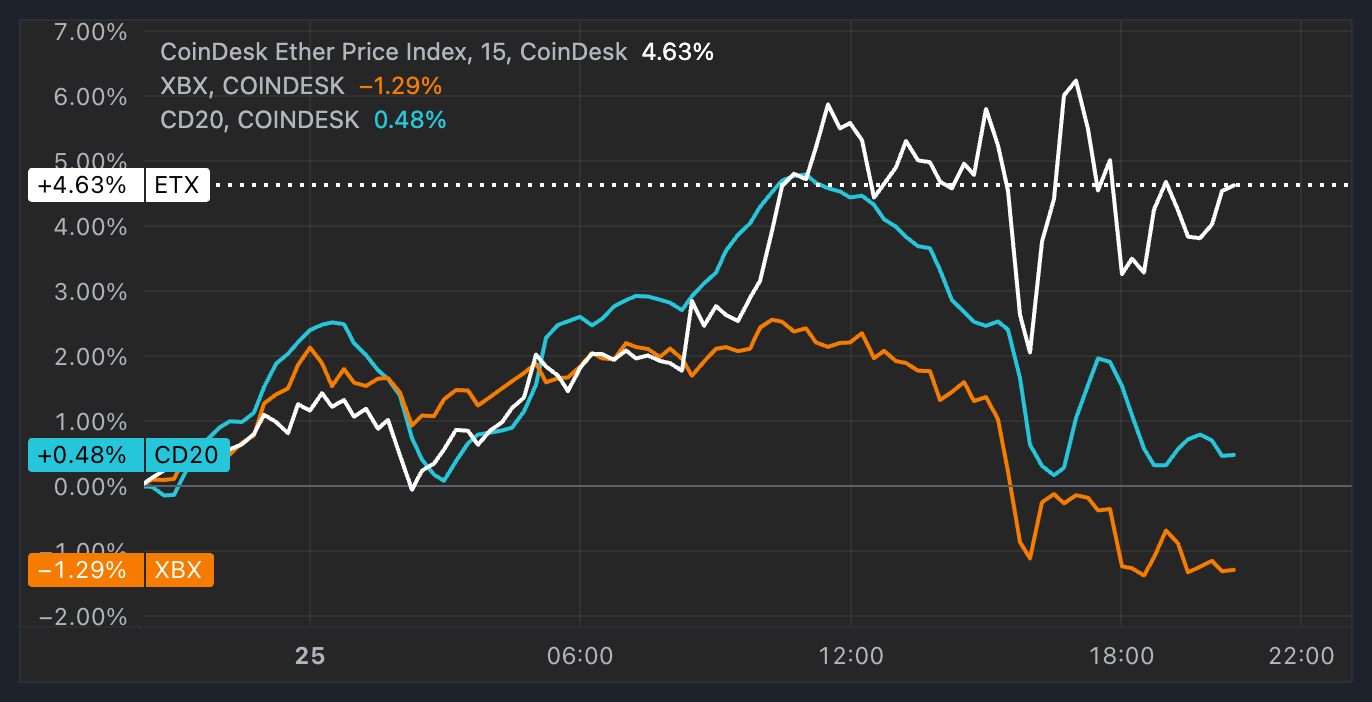Bitcoin
MicroStrategy Adds 55,500 More BTC To Its Portfolio For $5.4 Billion
Published
5 hours agoon
By
admin
Business intelligence firm MicroStrategy has significantly increased its Bitcoin (BTC) purchases this month in response to the bullish sentiment following President-elect Donald Trump’s victory on November 5. The company’s recent acquisitions have pushed its total Bitcoin holdings to approximately $38 billion.
Convertible Notes Fuel Massive Bitcoin Purchase
On November 25, co-founder Michael Saylor announced via social media that MicroStrategy had acquired 55,500 BTC between November 18 and November 24 for $5.4 billion.
This purchase was funded by proceeds from a $3 billion convertible note issuance and sales of common shares, as detailed in a filing with the US Securities and Exchange Commission (SEC).
Related Reading
Since beginning its Bitcoin acquisition strategy in 2020, Saylor has shifted from using corporate cash to a more complex funding model that involves selling convertible debt and shares.
The latest convertible note was issued at a zero percent interest rate, reflecting lenders’ confidence that MicroStrategy’s stock will appreciate beyond the conversion price in the future.
Jeffrey Park, a portfolio manager at Bitwise Asset Management, noted that Saylor has effectively leveraged financial arbitrage within the corporate treasury structure, allowing MicroStrategy to borrow funds at virtually no cost.
Saylor also revealed that MicroStrategy’s treasury operations have yielded a substantial 59.3% in Bitcoin returns year-to-date, translating to a net gain of approximately 112,125 BTC for shareholders, or about 341 BTC per day.
At a projected price of $100,000 per BTC, Saylor stated that this could mean an impressive $11.2 billion for the year, equating to roughly $34.1 million daily.
Analyst Warns Of Risks In Leverage Strategy
Since its foray into Bitcoin, MicroStrategy has acquired a total of 386,700 tokens, with an average purchase price significantly lower than its current market value.
The latest acquisitions occurred while Bitcoin prices were nearing all-time highs, with the company purchasing the new tokens at approximately $97,862 each, slightly above their current trading price.
Related Reading
However, this leveraged strategy has raised concerns among some analysts, particularly after MicroStrategy’s shares (MSTR) fell by 16% last Thursday.
Critics warn that if Bitcoin’s price declines sharply, the company’s stock could suffer similarly, recalling the downturn in 2022 when the cryptocurrency market experienced significant losses.
TD Cowen analyst Lance Vitanza remarked on the risks associated with leverage, stating, “When you apply leverage to anything, you amplify the returns both in the up direction and in the down direction.” He emphasized that MicroStrategy is a pioneer in applying this leverage strategy specifically to Bitcoin.
At the time of writing, the market’s leading crypto is trading at $95,350, registering a price decrease of 1.7% in the 24-hour time frame.
Featured image from DALL-E, chart from TradingView.com
Source link
You may like


Ethereum’s ETH Outperforms as Bitcoin (BTC) Price Recoils Off $100K Sell Wall


Safegcd’s Implementation Formally Verified


US detaining Bitcoin mining equipment at border: report


Robinhood Lists Dogwifhat, WIF Price To $5?


Newmarket Capital Launches Battery Finance, Bitcoin-Collateralized Loan Strategy


Can the XRP price realistically jump to $10 in 2024?
Bitcoin
Ethereum’s ETH Outperforms as Bitcoin (BTC) Price Recoils Off $100K Sell Wall
Published
57 mins agoon
November 25, 2024By
admin
After a prolonged downtrend relative to bitcoin (BTC), Ethereum’s ether (ETH) is showing signs of a resurgence.
ETH, the second-largest cryptocurrency on the market, gained over 4% in the past 24 hours, while BTC lost 1.5% during the same time, dipping below $95,000 during the Monday session. ETH even outperformed the broad-market CoinDesk 20 Index, which was up 0.5%.
The outperformance happened as investors started to rotate capital to smaller, riskier cryptocurrencies over the weekend following the stall of bitcoin’s near-vertical surge since Donald Trump’s election victory. The ETH/BTC ratio, which measures ether’s strength vs. bitcoin, plummeted to as low as 0.0318 on Thursday, its weakest reading since March 2021, but the gague has gained 15% since to 0.3660 at press time.
“The market seems to be expecting BTC to trade sideways until December as attention shifts towards ETH in the near term,” digital asset hedge fund QCP said in a Monday note.
On the options markets, ETH risk reversals are heavily skewed in favor of frontend calls, meanwhile BTC calls seem to be more bid only from the end of December 2024 onwards, QCP noted. The positioning implies that traders anticipate ether to perform well in the short-term, while bitcoin could pick up pace next year. Risk reversal is a strategy that involves purchasing simultaneously a call option (bullish bet) and a put option (bearish bet) for a specific risk-reward profile.
ETH poised for a rebound vs. bitcoin
“We’re seeing some rotation from BTC to ETH coming from crypto-native hedge funds and family offices,” Joshua Lim from Arbelos Markets said.” Josh Lim, co-founder of crypto derivatives prime brokerage firm Arbelos Markets, said in a telegram message.
U.S.-listed spot ETH ETFs saw their first net inflows on Friday, led by $99 million allocation into BlackRock’s ETHA product, following six days of continuous outflows, data compiled by Farside Investors shows. Holders of ETHA include “the largest names in finance” including $80 billion hedge fund Millenium, analytics firm Kaiko said in a Monday report.
There could be more gains in store for ether against bitcoin in the coming period. The ETH/BTC ratio hit a key support level on Thursday and rebounded, while last week’s candle suggested a trend reversal, well-followed crypto trader Pentoshi noted.
“Quite possible the low is in here and that at least a short term reversal is coming,” Pentoshi said in an X post.
Bitcoin Stalls at $100K
Now extended far above its daily moving averages, bitcoin is likely trade sideways for a while as investors digest the steep rally since Donald Trump’s election victory, said Paul Howard, senior director at crypto trading firm Wincent.

“There is a significant sell wall at the psychological $100K level,” Howard told CoinDesk. “I would expect we oscillate around these levels until the new year. Staying market neutral and buying downside protection here is always a sensible risk reward,” he added.
Source link
Bitcoin
US detaining Bitcoin mining equipment at border: report
Published
2 hours agoon
November 25, 2024By
admin

U.S. Customs and Border Protection, at the request of the Federal Communications Commission, has been detaining imports of Bitmain’s Antminer ASIC miners at ports nationwide for up to two months.
The delays have impacted seven U.S.-based Bitcoin (BTC) mining companies without answers, according to a report from Blockspace. The detained models include the S21 and T21 series miners.
CBP has not disclosed the reason for the detentions or provided a timeline for resolution. Some affected companies have reported daily holding fees exceeding $200,000.
The holds do not appear to target other ASIC manufacturers, such as MicroBT or Canaan, and are reportedly concentrated at West Coast ports like San Francisco.
Border delay speculation
Industry speculation suggests the delays may be related to scrutiny of chips supplied by Xiamen Sophgo, a Chinese semiconductor company under investigation for allegedly violating U.S. sanctions, according to Blockspace.
Sophgo’s chips, including the CV1835, are reportedly used in certain Antminer models, such as the S19 and T21 series. Sophgo’s CEO, Micree Zhan, is also a co-founder of Bitmain, raising questions about potential links to the investigation.
The Department of Commerce began investigating Sophgo after discovering a chip linked to the company in a Huawei device. Huawei has faced U.S. sanctions since 2019 over national security concerns.
While no confirmed link exists between these sanctions and the detained Antminer shipments, sources speculate the FCC and CBP are inspecting imports for restricted components.
Source link
Battery Finance
Newmarket Capital Launches Battery Finance, Bitcoin-Collateralized Loan Strategy
Published
5 hours agoon
November 25, 2024By
admin

Newmarket Capital recently closed the first investment deal for its new Battery Finance loan strategy, which enables borrowers to incorporate bitcoin into long-term financing structures as collateral.
On November 7, 2024, Newmarket Capital, an institutional capital manager and Registered Investment Adviser completed a refinancing for the Bank Street Court apartment in Old City, Philadelphia, PA. The loan was collateralized by both the building and approximately 20 bitcoin.
Newmarket Capital CEO Andrew Hohns is excited about not only setting his company’s new strategy in motion but the symbolism in the deal.
“It’s a building that is located less than half a block away from the first bank of the United States,” Hohns told Bitcoin Magazine. “Philadelphia has had a lot of firsts and innovations over the years, and we’re proud to contribute another one to the list.”
How The Battery Finance Strategy Works
Battery Finance enables bitcoin to be used as 10% to 30% of the collateral for loans alongside traditional assets. To bring this new strategy to life, Newmarket Capital partnered with Ten 31 to establish Battery Finance, a majority-owned subsidiary of Newmarket Capital that utilizes bitcoin in financing structures.
Unlike other lending companies that let clients borrow against bitcoin with a risk of liquidation in the event that bitcoin’s price drops below a certain threshold, Newmarket Capital removes the risk and offers loan structures without a mark-to-market trigger.
“As lenders, we are constructive on the long-term value of bitcoin and comfortable recognizing bitcoin as collateral without mark-to-market risk,” said Hohns.
“We achieve this by incorporating bitcoin as a component of a broader collateral package alongside traditionally financeable assets. In this way, we have improved our downside through the introduction of bitcoin, an uncorrelated element — an asset that has had such a strong history of appreciation over time — in the collateral package.”
Deals that employ this strategy can be structured differently. In some cases, a borrower can use bitcoin they’re already holding as collateral for a loan, while, in other cases, Newmarket Capital and the borrower purchase bitcoin as part of the loan’s structure. The latter is how the loan for the Bank Street Court building was structured.
“It’s a $16.5 million building, and we offered the building owner a $12.5 million loan,” explained Hohns.
“The use of proceeds was to pay off the existing financing, which was $9 million, to provide them with approximately two million dollars of CapEx for certain improvements to the property they wanted to make,” he added.
“With the remaining $1.5 million dollars, we purchased just shy of twenty bitcoin as part of our combined collateral package.”
(At the time of writing, that bitcoin had already appreciated 30% in value since it was purchased for the loan.)
Unlike traditional loans which often lock borrowers in with prepayment penalties or a make-
whole, the Bank Street Court financing can be paid off at any time with no penalty. To allow for this outcome, the borrower and the lender align to share appreciation on the upside from the bitcoin over the life of the loan.
The longer the loan is outstanding, the greater the share of bitcoin appreciation that vests for the borrower, incentivizing borrowers to take a long term view on the bitcoin.
Although the loan can be repaid at any time and the building released, the earliest that the bitcoin can be wound down is four years, in line with bitcoin’s four year rhythm. The loan carries a single digit interest rate and has a maturity of 10 years.
Bringing Forward Bitcoin’s Value
Hohns, a Bitcoiner himself, understands that other Bitcoiners have a low time preference, that they prioritize future economic well-being over more immediate gratification. However, he acknowledges that there are limits to this approach, which is why Newmarket Capital created the Battery Finance strategy.
“The lowest time preference is not feasible for humans, because we have a finite life,” he said.
“There’s a point where we want to accomplish things with our lives. We want to grow our business or start a new business or just do the things that we all have passion for, like opening up a MakerSpace or a brewery or a bookstore — whatever the case might be. If you’re just HODLing the Bitcoin, you’re deferring those dreams,” he added.
“By offering this financing tool, we can essentially serve as a mechanism to transform those time preferences, to bring forward the appreciation of the bitcoin by offering a significant amount of financing to accomplish whatever the real world goals borrowers have.”
Target Borrowers
Battery Finance is currently focused on working with borrowers who are interested in acquiring or refinancing commercial properties.
“For the time being, we’re inviting interest around loans that are, generally speaking, $10 million to $30 million dollars, which include 10% to 30% percent bitcoin with 70% to 90% percent traditionally-financeable income-producing assets,” explained Hohns.
“This is a tool for both asset owners that want to redenominate some of the equity in their
existing portfolio into bitcoin and its also a tool for Bitcoiners who want to obtain stable long-term financing supported in part by their bitcoin to acquire assets in the real world. This way, they can generate income and accomplish their goals while remaining invested in bitcoin.”
In time, Battery Finance plans to service a broader range of customers.
“We see broad applicability for this lending structure, including, over time, to people that are at different phases of their Bitcoin savings journeys,” said Hohns. “I hope that these kinds of products will develop into solutions that enable people to do things like finance a house or automobile with their bitcoin.”
Source link

Ethereum’s ETH Outperforms as Bitcoin (BTC) Price Recoils Off $100K Sell Wall

Safegcd’s Implementation Formally Verified

US detaining Bitcoin mining equipment at border: report

Robinhood Lists Dogwifhat, WIF Price To $5?

MicroStrategy Adds 55,500 More BTC To Its Portfolio For $5.4 Billion

Newmarket Capital Launches Battery Finance, Bitcoin-Collateralized Loan Strategy

Can the XRP price realistically jump to $10 in 2024?

Shiba Inu Price Eyes 76% Rally As 6.8m SHIB Tokens Burned

VanEck Doubles Down on Big Bitcoin Price Target, Says Key Indicators Continue To ‘Signal Green’

Multichain AI token poised to dethrone SOL, TON: 5,000% gains expected

Will Pi Network Price Reach $100 in This Bull Market?

Axie Infinity developer cuts 21% workforce: report

Chill Guy Meme Coin Pumps Another 50% as Creator Fights Back

Super Pepe Coin Whale Sells 130B PEPE, Shifts Focus To EIGEN

AI predicts one altcoin set to outperform XRP and Solana in 2025
182267361726451435

Why Did Trump Change His Mind on Bitcoin?

Top Crypto News Headlines of The Week

New U.S. president must bring clarity to crypto regulation, analyst says

Ethereum, Solana touch key levels as Bitcoin spikes

Bitcoin Open-Source Development Takes The Stage In Nashville

Will XRP Price Defend $0.5 Support If SEC Decides to Appeal?

Bitcoin 20% Surge In 3 Weeks Teases Record-Breaking Potential

Ethereum Crash A Buying Opportunity? This Whale Thinks So

Shiba Inu Price Slips 4% as 3500% Burn Rate Surge Fails to Halt Correction

‘Hamster Kombat’ Airdrop Delayed as Pre-Market Trading for Telegram Game Expands

Washington financial watchdog warns of scam involving fake crypto ‘professors’

Citigroup Executive Steps Down To Explore Crypto
Mostbet Güvenilir Mi – Casino Bonus 2024

Bitcoin flashes indicator that often precedes higher prices: CryptoQuant
Trending

 2 months ago
2 months ago182267361726451435

 Donald Trump4 months ago
Donald Trump4 months agoWhy Did Trump Change His Mind on Bitcoin?

 24/7 Cryptocurrency News3 months ago
24/7 Cryptocurrency News3 months agoTop Crypto News Headlines of The Week

 News3 months ago
News3 months agoNew U.S. president must bring clarity to crypto regulation, analyst says

 Bitcoin4 months ago
Bitcoin4 months agoEthereum, Solana touch key levels as Bitcoin spikes

 Opinion4 months ago
Opinion4 months agoBitcoin Open-Source Development Takes The Stage In Nashville

 Price analysis4 months ago
Price analysis4 months agoWill XRP Price Defend $0.5 Support If SEC Decides to Appeal?

 Bitcoin4 months ago
Bitcoin4 months agoBitcoin 20% Surge In 3 Weeks Teases Record-Breaking Potential


